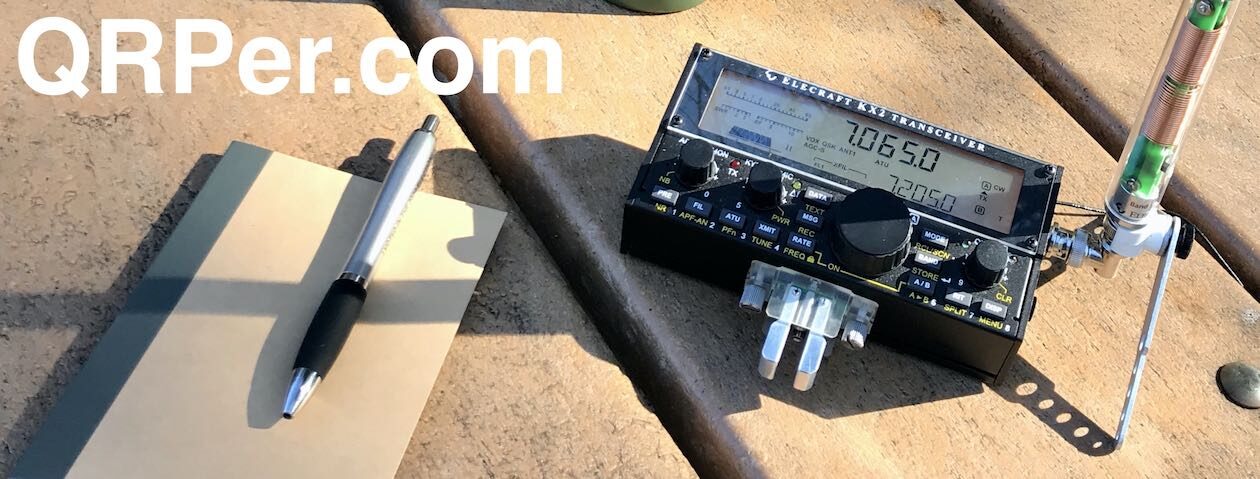 Regular readers of QRPer.com might question the wording in my title since I’ve already posted several field reports and even a full review of the Xiegu X6100. So why would this X6100 be considered a “new” radio–?
Regular readers of QRPer.com might question the wording in my title since I’ve already posted several field reports and even a full review of the Xiegu X6100. So why would this X6100 be considered a “new” radio–?
Since I go over this in more detail in the activation video (linked and embedded below), I’ll give you the nutshell version here:
My activations with the X6100 early this year (2022) were all performed using a loaner unit sent to me by Radioddity. I kept that unit for a few weeks, shipped it on, and purchased one of my own.
In February, when I received the X6100 I purchased, I immediately noticed a small mechanical issue with the encoder.

I tried fixing it (with instructions received from Xiegu) but in the end had to return the transceiver for replacement.
The X6100 unit in this field report is my replacement–technically, the third X6100 I’ve had in my hands, and this was my first activation using it.
Many of you have asked why I haven’t taken the X6100 to the field more often this year and this is why. I basically didn’t have a functioning unit for most of February, March, and April. Radioddity was quite responsive to my issues with the X6100, but frankly I had a lot going on during that time frame so it took longer than normal to troubleshoot, modify, test, and send back the faulty unit.
Fortunately, the replacement X6100 has no encoder issues other than the brake is very tight. I’m not willing to break the warranty seal on this unit to adjust it, so I’ll just live with a much-tighter-than-I’d-like encoder.
[Update: Bob (W0BNC) points out that the tight brake is due to friction caused by a felt pad under the X6100 encoder knob. The remedy is to pull off the rubber ring around the encoder knob, loosen the set screw, lift the knob slightly off the body, and retighten. I’ll do this when I’m back with the X6100 after summer travels. Thanks, Bob!]
X6100 field kit test
 This activation was also the perfect opportunity to test all of the components of a dedicated field kit I’m building around the X6100.
This activation was also the perfect opportunity to test all of the components of a dedicated field kit I’m building around the X6100.
The kit consists of:
- The Xiegu X6100 QRP transceiver,
- a BNC binding post adapter,
- paddles,
- the X6100 battery charger,
- a 31′ speaker wire antenna
- 25 meters of 2mm throw line,
- a weaver 8oz weight, and a
- logging pad and pencil.
Everything, save the antenna, fits in my Red Oxx Hound EDC pack.
 Eventually, I’ll replace the speaker wire with some thinner Wireman stuff and it should all fit in the Hound pack, albeit snuggly!
Eventually, I’ll replace the speaker wire with some thinner Wireman stuff and it should all fit in the Hound pack, albeit snuggly!
I’ve decided that the X6100 will live at my parents’ home in the NC foothills, so I’ll always have a field radio kit available while staying there overnight.
Lake Norman State Park (K-2740)
 On May 9, 2002, an opportunity opened up in the afternoon to finally take my new X6100 to the field! Continue reading Pairing my new Xiegu X6100 with a 31 foot speaker wire antenna (and avoiding RX overload)
On May 9, 2002, an opportunity opened up in the afternoon to finally take my new X6100 to the field! Continue reading Pairing my new Xiegu X6100 with a 31 foot speaker wire antenna (and avoiding RX overload)




























